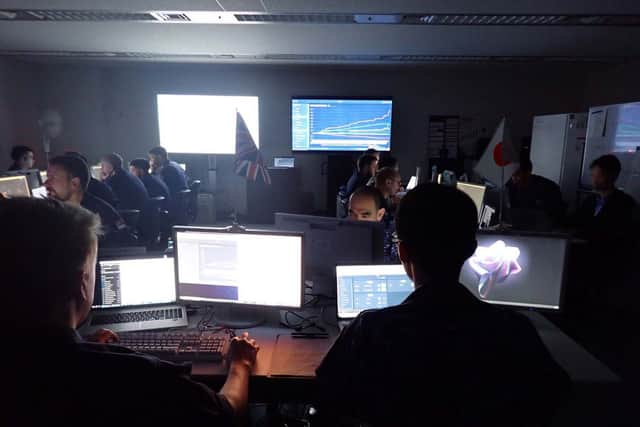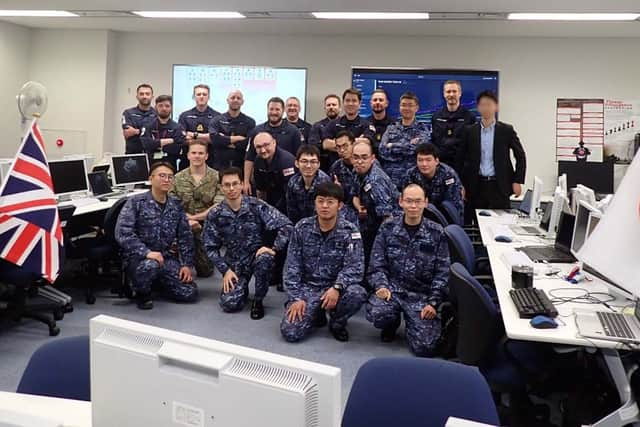Royal Navy: Portsmouth-based cyber security specialists fend off "aggressive" hacking attempts
and live on Freeview channel 276
The Royal Navy team from the Maritime C5ISR Support Unit (MCSU) were an integral part of the operation - involving 41 teams from 17 nations. Personnel at the Cyber Security Operating Centre on Portsdown Hill tested their cyber defence skills during the British Army’s Defence Cyber Marvel 3 exercise in Estonia.
These cyber operations specialists are usually on the front lines across the world, protecting ships and bases from threats on a 24/7 basis. They previously worked closely with Ukrainian teams in 2023 while in Tallinn, but this year they formed a joint team with the Japanese Maritime Self Defence Force’s Communication Security Group.


Advertisement
Hide AdAdvertisement
Hide AdThe Royal Navy said a 22-strong team – 12 RN and 10 JMSDF – were tasked with "protecting an island in the Indo-Pacific that was facing aggressive cyber-attacks from a hostile nation". The cyber battle got more and more challenging with the specialists managing to repel attacks on national infrastructure in the scenario. Training regimes such as this are becoming more important, with hackers coming up with more and more complicated threats on a daily basis.
Lieutenant Commander Paul Adkins, in charge of the RN team, said: “Our participation in the exercise with the Communications Support Group based in Tokyo represents a culmination of activity that only came into being last year; but has already cemented an enduring relationship with our friends in the JMSDF.
“Together we have refined and developed joint tactics and procedures that have borne fruit now, but more importantly, will serve us well in the future, particularly as we look to provide cyber assurance to CSG deployment 2025. Here we look forward to continued engagement with the Japanese Defense Forces”.
Lieutenant Commander Paul Adkins said: "Our participation in the exercise with the Communications Support Group based in Tokyo represents a culmination of activity that only came into being last year; but has already cemented an enduring relationship with our friends in the JMSDF. Together we have refined and developed joint tactics and procedures that have borne fruit now, but more importantly, will serve us well in the future, particularly as we look to provide cyber assurance to CSG deployment 2025. Here we look forward to continued engagement with the Japanese Defense Forces."


Advertisement
Hide AdAdvertisement
Hide AdLeading Engineering Technician Joe Barnett added: “Being relatively new to Navy Cyber, it was an amazing experience to work with a cyber team from the Japanese Navy and I have learnt a lot throughout the exercise. The opportunity to do this, whilst also being able to explore the city of Tokyo in my downtime makes me feel that I have one of the best jobs in the RN.”
The majority of the 1,000 personnel in 46 teams involved were operating from Tallinn, Estonia, at NATO’s Cyber Range. Others were operating in Kenya, Singapore, Philippines, India, Indonesia and Brunei. Teams were split into red and blue, with blue squadrons being scored on the defence against attackers.
The RN/JMSDF team finish in sixth place in the competition. The exercise created government, hospital, power plant and military networks. Royal Navy and Japanese personnel defended critical national infrastructure from increasingly sophisticated attacks, eradicating hackers from the network. The joint team regularly briefed back up to an Australian chain of command throughout the scenario